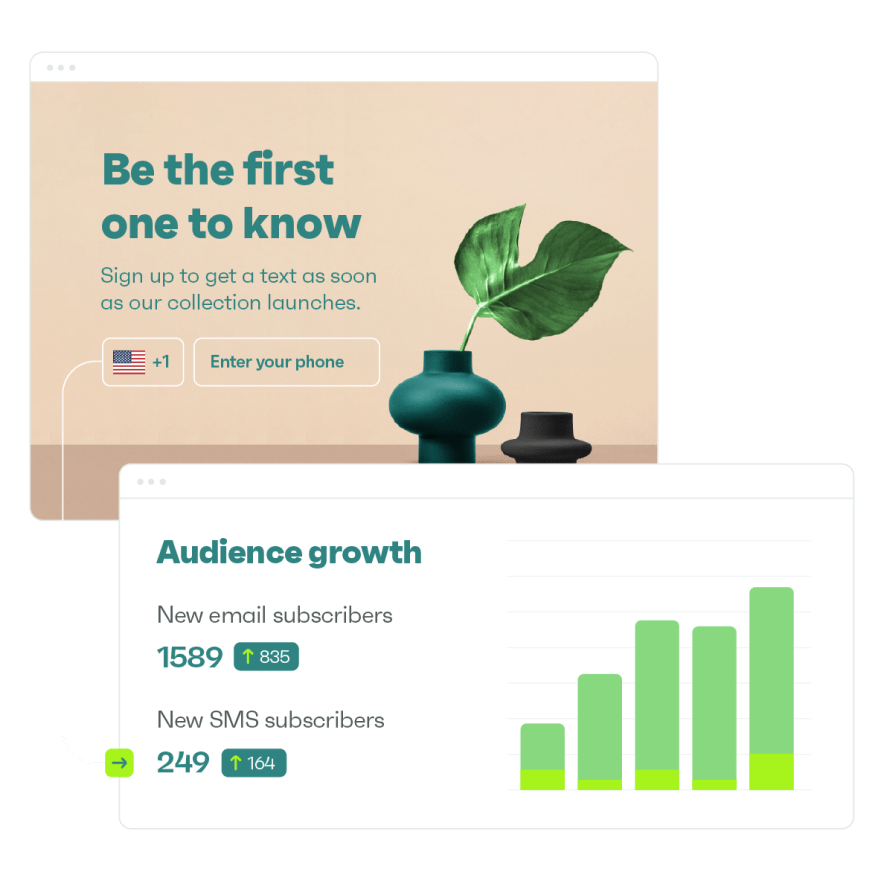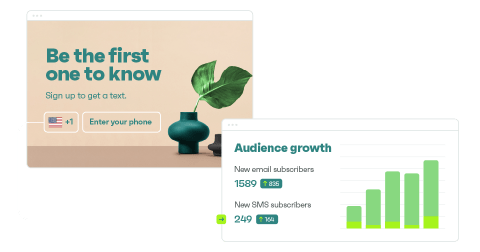Drive sales on autopilot with ecommerce-focused features
See FeaturesHow to keep optimizing your ecommerce store through disruption
As disruptive as the ecommerce industry is, everything we know as marketers can change in an instant. One of the biggest challenges ecommerce brands face is sustainable growth, and remaining flexible to respond to industry changes throughout that growth.
How can you grow under these conditions? Once you have grown, how can you be nimble enough to respond to whatever the industry throws at you?
Chloë Thomas has the answers. Mastermind behind eCommerce Masterplan, a resource hub and online summit for brands, she runs two award-winning podcasts, has written 5 books, and is a sought-after keynote speaker and panelist across the industry. With over twenty years of marketing experience under her belt, Chloë is a force to be reckoned with.
We had the opportunity to sit down with her and get her thoughts on what growth looks like for ecommerce brands today, and how best to achieve that growth.
Chloë, you do so much for the ecommerce community. I’d love to know how you got started with eCommerce Masterplan and what you set out to achieve.
Chloë Thomas: Well, I used to run an agency, and then I did quite a lot of coaching and consulting. The problem with that was there’s only so many people you can help in a day if you’re taking those routes. It’s all very one-on-one and very done-for-you.
I wanted to help more people, and I wanted to protect my time and my energy. Now it’s all about helping thousands of people and giving them the tools and the skills to be able to help themselves, which is both a mixture of advice and guidance, but also inspiration.
Throughout the last 15 or so years, people have asked me, “Chloë, is this what I should be doing? And Chloë, what should I be doing?”
That’s the two questions I’m always trying to answer; to make sure people know what they need to know about, and to give them the real inspiration and the real guidance on what they should be doing to get to the next step.
Throughout the last 15 or so years, people have asked me, “Chloë, is this what I should be doing? And Chloë, what should I be doing?” That’s the two questions I’m always trying to answer; to make sure people know what they need to know about and to give them the real inspiration and the real guidance on what they should be doing to get to the next step.
Chloë Thomas, eCommerce Masterplan
This is why we have the two podcasts: eCommerce Masterplan, which is about sharing the inspiring stories of other retailers and brands. This way, you can see what other people are doing behind the website.
Then on Keep Optimizing, we have expert marketers coming on to share the latest tactics and ideas and strategies that work on those various marketing methods.
Finally, tackling how you do it or giving people the models of how to make better decisions in their business is where the books, my speaking, and webinars come into it.
I feel like these questions: “Is what I’m doing what I should be doing?” and “What should I be doing?” are so common. That’s what ecommerce brands are trying to answer every day. So many merchants don’t know what the next steps are, or if they’re at the place where they should be taking that next step.
Chloë Thomas: I hope that they get that on the podcast, and go, “Wow. We should be doing that.”
They also get, “Wow. We shouldn’t be that. Or that’s not for us this year, or it’s fine that we stopped doing that.” I hope they also get the things not to do, because now they know they can close that box and ignore it.
In ecommerce, there is so much to be done in any business. The list of things we could do is endless. The successful businesses are the ones who work out what they should be doing, which is at the core of everything. What should you be doing at what step?
Flexible DNA: How adaptability benefited brands during the pandemic
Ecommerce is a challenging industry. Not only are things changing in the blink of an eye, but there are quite literally hundreds of tiny niches within the ecommerce industry that demand expertise. It’s impossible to be an expert in all of these niches and keep up with rapid changes at the same time.
Throw a global pandemic into the mix, and you’ve got chaos. This was the case for many online merchants navigating the last 18 months. Smaller brick-and-mortar stores rushed to get online amid a sea of already-present competition, and established brands had to put more focus on ecommerce than ever before.
I asked Chloë about how her audience was affected by the pandemic, and if she had good suggestions for future-proofing strategies.
Chloë Thomas: I think it’s been a fascinating time period because it’s accelerated so many trends. We’ve seen that there haven’t really been any new trends, I think there’s just been an acceleration of offline stores coming online, and an acceleration of consumers wanting more of an emotional connection to brands. They have more of a desire for ethics and sustainability.
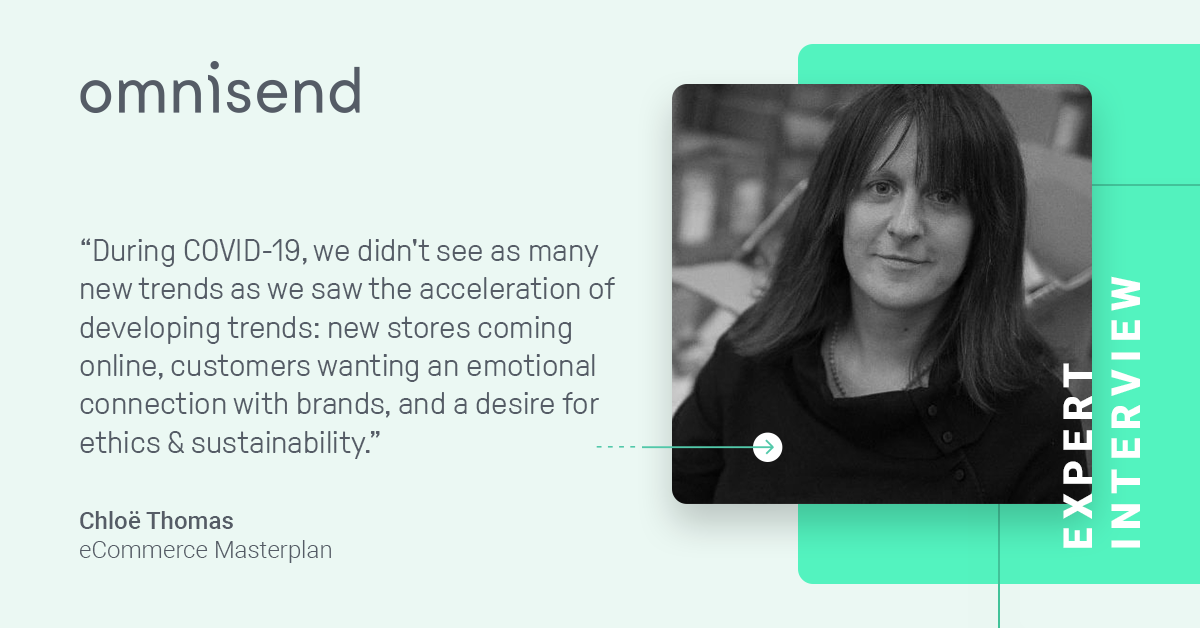
One of the fundamental keys was that those who had decent foundations in place in their business were able to adapt and change a lot more quickly than those who didn’t have the right foundations.
If your business had a great backend system that properly talked to the great front-end system, or you were very easily able to integrate a proper CRM email tool—you were so far ahead of those who were on, some now dubious website platform—where implementing anything was two days of developer time and five grand, and then three weeks of testing before it could actually do anything.
Businesses that could move fast because they had the right tech platform and tech foundation in place. They were able to take advantage of the opportunities, pivot, and avoid the downsides a lot faster—but it wasn’t just about the tech. It was also about kind of the business mindset that sits behind it.
If everyone in the business was clear on what they stand for and who their customer was, it was an awful lot easier to pivot and flex—especially when you’re working from home. Did you have the team management systems in place and the tech in place to enable people to work from home and do so effectively? If you had the wrong team in place, you’re also going to struggle.
So I think those foundational parts that make a strong business. I saw some businesses who had that in place or who are able to very quickly get it in place thrive. I saw those who didn’t struggle a lot more, which I think is what the pandemics really done. It’s magnified everything we had before, which has led to a lot of cracks showing, or a lot of opportunity showing depending on where you were.
So for you, flexibility, adaptability, and remaining nimble is the best way to future-proof.
Chloë Thomas: Completely. It’s equally tech, both marketing tech and what actually runs the front end of your business. It’s how your team tech is set up. Not only that, but it’s also the mindset that sits within the business. It’s also the team training, the vision, the mission, all those nuts and bolts, whatever you want to call it. I like to say the DNA of the business—I don’t mind whether you call it a mission, a vision, a value, or a behaviors list.
If it’s there, and it’s properly within the DNA of the business for everything you do, then it becomes very easy to flex and change because you can trust people to do things because they know what the DNA is. They’re not going to go that far off script.
Having a clear vision of where you’re going and what you need to do to get there makes a huge impact in how we roll with whatever punches the industry throws. According to Chloë, the right technology stack was only part of whether or not you were successful. For her, the correct mindset allowed you to work effectively, even while remote, and move forward together.
“The sky isn’t falling”—How to manage coming privacy changes
Privacy has been a huge concern over the past few years, with consumers becoming ever more conscious about the data they give up to companies and what’s then done with that information. Rightly so—privacy is an important topic across the digital world.
However, this does present some unique challenges to marketers, whose previously relied-upon channels have been becoming more limited, either in use, or in the data collected from customers. Third-party cookies and data are largely disappearing across the industry, PPC ads across channels are becoming increasingly siloed, and now, with iOS 15, even open-rate tracking will soon be a gone-but-not-forgotten metric.
I asked Chloë for her thoughts on the struggle between the increasing need for privacy contrasted against a marketer’s need for data.
Chloë Thomas: All the privacy changes that are coming in place with the tech giants, they appear to be good for the consumer. I think fundamentally as a human being, this is not a bad thing and I think as a marketer, I chose to take the sky is not falling in pragmatic approach to it all.
I’ve been in the industry for over 15 years now. I’ve been through cookie laws. I’ve been through GDPR, and the sky never fell. I think you get a lot of noise around these things, which sometimes creates more fear than it needs to.
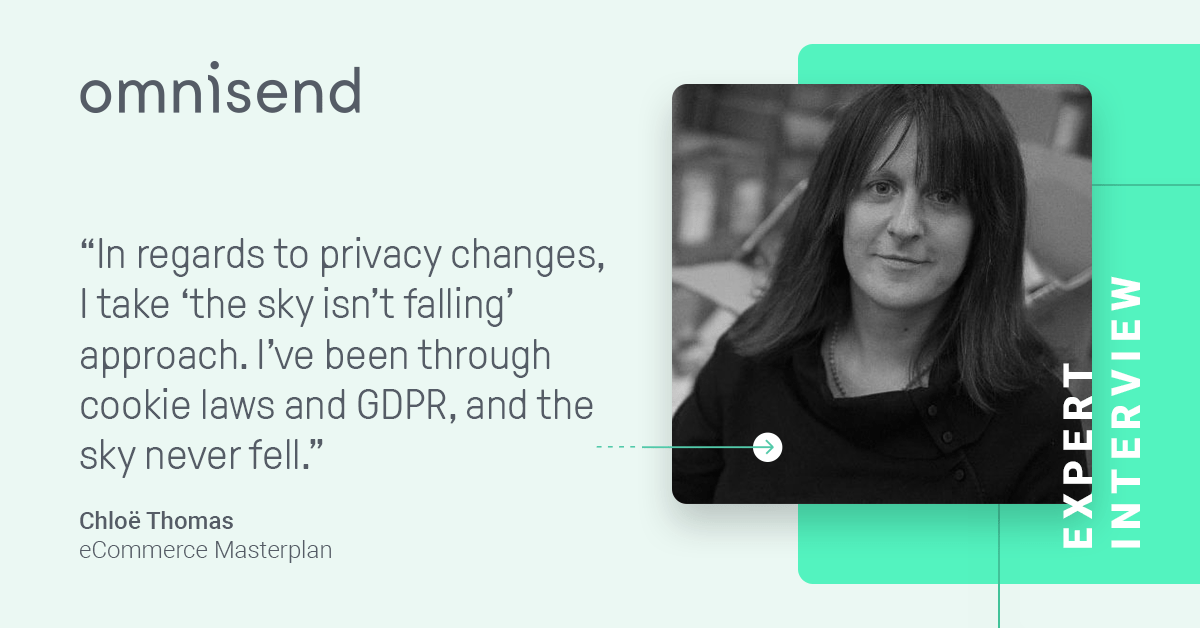
The changes to open rates I find far more frustrating than the changes to the Facebook ad stuff that’s just happened because all my “only mail your active list” settings are all on open rates. Oh God, I’ve got to go back and rework all of that. I send quite a lot of emails out that I have, I don’t think anyone needs to click on, so how does that work?
I think, fundamentally, all these changes are good for the human being and for the ecommerce marketer or any marketer. The first thing we need to do is not panic. The second thing we need to do, in light of not panicking, is to remember that the fundamental metrics that are the most important to our business are that customers are buying and how much it costs us to get them to buy—that’s it.
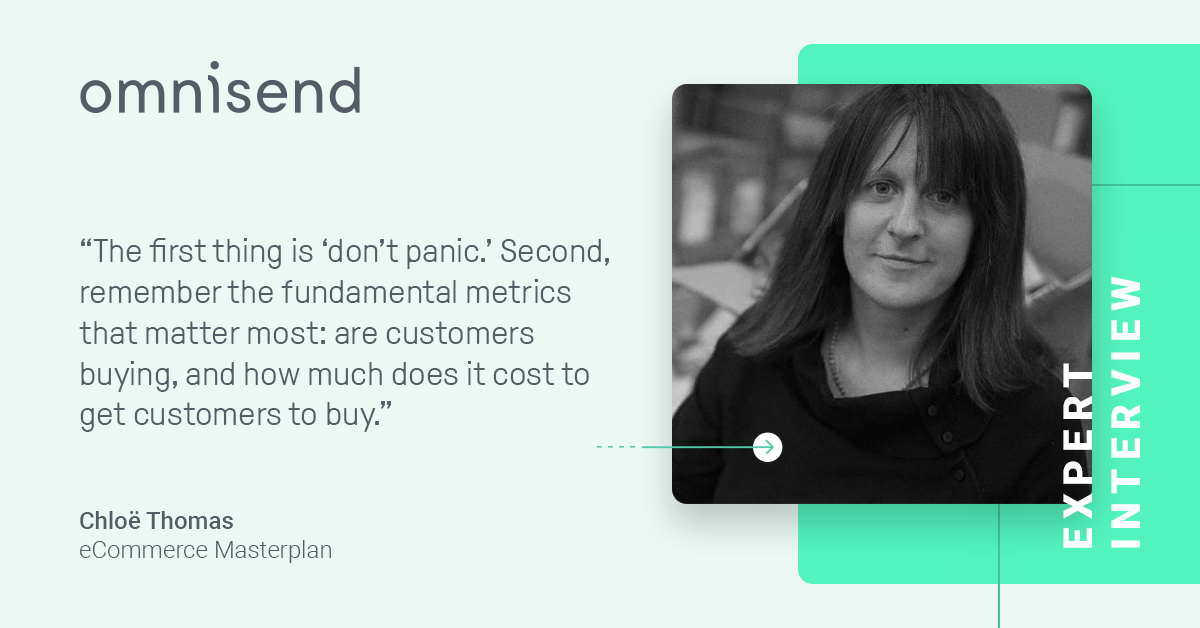
They’re still going to buy. Even if we can’t track that they open that email, they are still going to be buying from us if they’ve received it. All the metrics that happen in between the sending of the email and the purchase, or all the metrics that happen in between the seeing of the Facebook ad and the checking out on our website, they’re all useful for optimization. I am a big fan of optimization, but they are not the most important metrics we need to run our businesses.
Even if we can’t track that they open that email, they are still going to be buying from us if they’ve received it. All the metrics that happen in between the sending of the email and the purchase, or all the metrics that happen in between the seeing of the Facebook ad and the checking out on our website, they’re all useful for optimization. I am a big fan of optimization, but they are not the most important metrics we need to run our businesses.
Chloë Thomas, eCommerce Masterplan
You know, big companies like Facebook, like Omnisend yourselves, you are dealing with the problem far better than we as individual retailers and marketers can do, so we have to stay calm, continue creating great content, probably raise our game as marketers.
Most of the pivoting around it, methods and strategies I’ve seen are basically write better emails, create better ads, create partnerships with other like-minded people, so you’re targeting better. It’s not rocket science—it’s probably stuff we should have been doing beforehand.
So whilst I would far prefer a world in which open rates were reported, I’m not going to be losing any sleep over the fact.
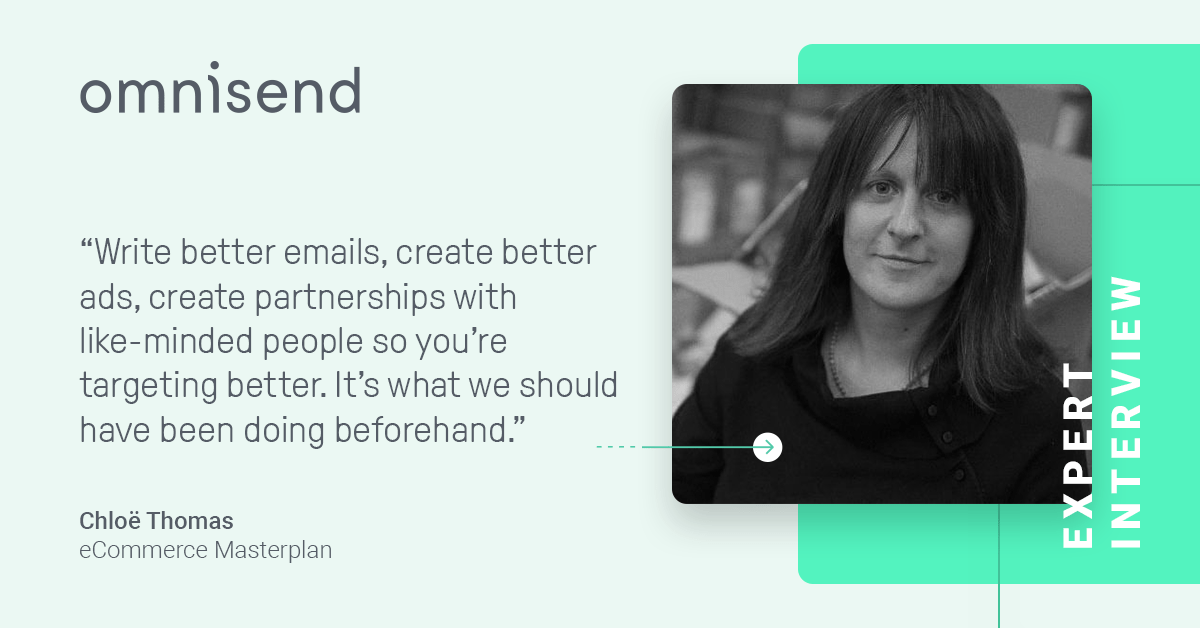
A lot of the fixes surrounding iOS 15 updates concern writing better subject lines, and targeting better and more often. You won’t be able to track if an email is opened, but you still know if a customer has clicked, and definitely if they’ve purchased.
At the end of the day, conversion rate will always be your most valuable, actionable metric. In the meantime, there’s still a few different things you can do to prepare for the coming iOS 15 changes.
Chloë Thomas has immense experience in the industry, and has spent the last 15 years helping ecommerce brands optimize their stores and marketing strategies. I wanted to ask her a bit more about advice she’d have given herself when she was starting off in the industry—and if that advice was any different from the advice she’d give someone starting today.
Chloë Thomas: When I first started in ecommerce, it was my second job out of uni. I’d been working doing marketing for a bank. Then I got a job working for a UK high-street retailer who had a catalog and a website.
So way back when we were in the early two-thousands, we were trying to do multichannel marketing, which is mental if you think about how difficult is that is today, and we were trying to do it. One of the major howlers—and how the marketing director didn’t just laugh me out of his office when I asked him that this question—I do not know.
So what the howler was: we were marketing historically inspired gifts, and I had money left in my catalog budget. Which, if anyone thinks email is well-tracked, catalog mailings are tracked and analyzed to the nth degree, especially back then.
I had some money left and someone had cold-called me to offer me a pitch-side advertising boarding at the rugby league finals. And I got really excited because I had money enough to spend on it. This would be really exciting. I took the idea to the marketing director, and he went, “It’s really not our target market, is it Chloë?”
“Yeah, but, it’s really cheap.”
“It’s still not our target market.”
So the advice I would give young Chloë in her first ecommerce job is that not all eyeballs are created equally. So you have to get yourself in front of the right eyeballs—which is just critically important.
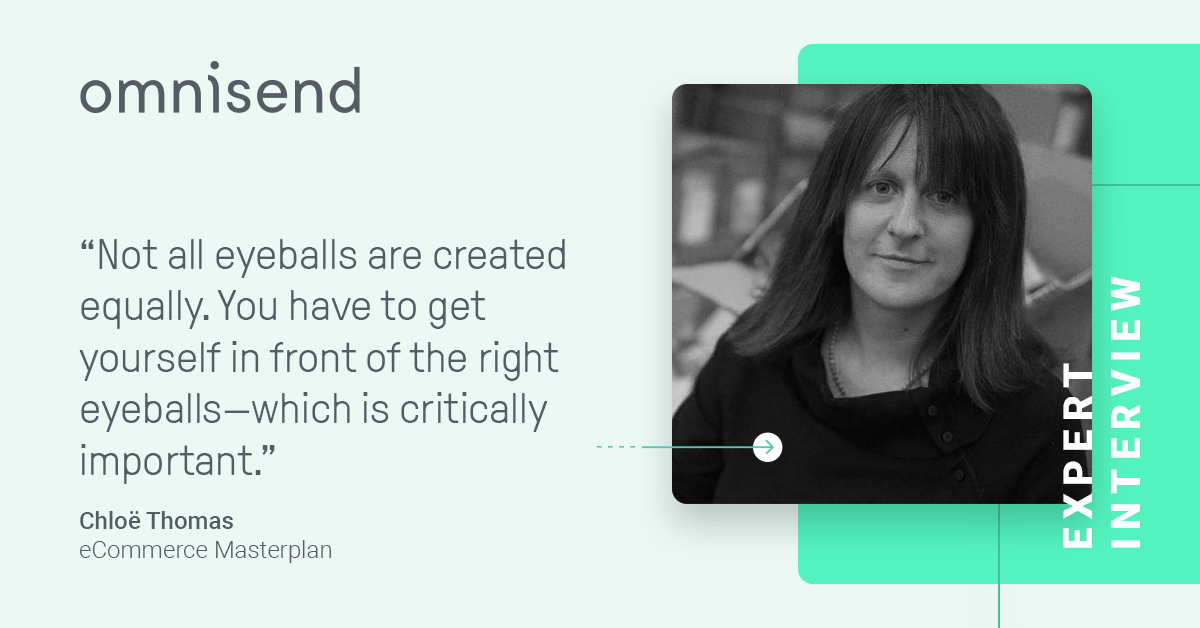
Would that be the same advice I give people starting off in the industry today? Not exactly. I would say that if you want to get into this industry, and you want to do well in it, then you have to love spreadsheets and analysis of your performance of your campaigns. You need to love analysis and spreadsheets, and you also need to be inquisitive and enjoy learning about what new things are out there.
I would say that if you want to get into this industry, and you want to do well in it, then you have to love spreadsheets and analysis of your performance of your campaigns. You need to love analysis and spreadsheets, and you also need to be inquisitive and enjoy learning about what new things are out there.
Chloë Thomas, eCommerce Masterplan
You need the ability to critically work out “is that for me or not,” otherwise learning just becomes a nightmare, and the inquisitiveness to go “Hm, that number’s gone down—I wonder why.” Then you need to research, to look to tests and everything else. So unless you like analysis and inquisitiveness, it’s just a no, run, runaway now.
It’s true—many underestimate the amount of data collection and analysis that exists when running an ecommerce business—especially when it comes to marketing. Being a marketer is being a scientist, and wanting to know more about the “why” behind your results.
Test everything and test often—it’s the only way to learn and grow in ecommerce.
Set it and forget it: The biggest mistake ecommerce brands make with automation
Chloë, what’s the biggest mistake you see ecommerce brands making?
Chloë Thomas: Setting up marketing and then just leaving it—that’s the one which just continues to make me scream, because I used to run a Google Ads agency. Just turning on (and leaving) some Google Ads, be it a keyword campaign, or be it a Google shopping campaign, and then just leaving them on for six months and never even looking at the results—despite the fact it’s spending hundreds of pounds a week.
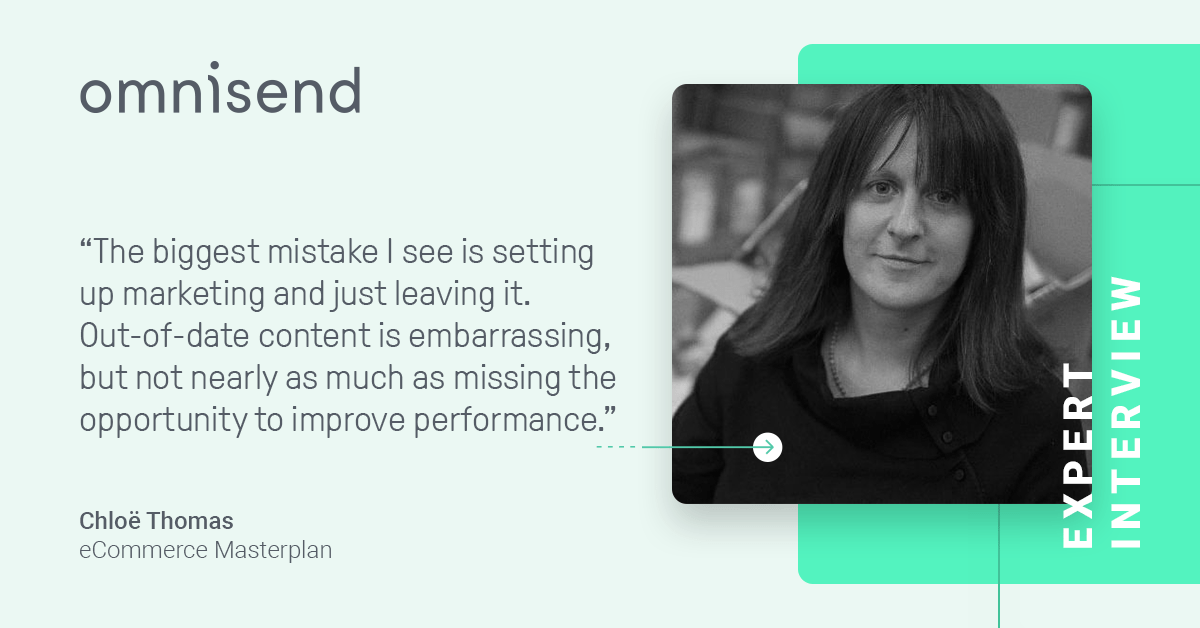
And of course, email automations are the same thing. It’s hugely embarrassing if the Christmas graphics is still going out in April on our welcome sequence. What’s more embarrassing than that is the fact that you haven’t looked at what people are interested in, what they’re clicking on, what they’re responding to and optimized your automations in response. The out of date content is embarrassing, but nowhere near as embarrassing as missing the opportunity to improve performance.
It’s hugely embarrassing if the Christmas graphics is still going out in April on our welcome sequence. What’s more embarrassing than that is the fact that you haven’t looked at what people are interested in, what they’re clicking on, what they’re responding to and optimized your automations in response. The out of date content is embarrassing, but nowhere near as embarrassing as missing the opportunity to improve performance.
Chloë Thomas, eCommerce Masterplan
It’s just leaving money on the table at that point.
Chloë Thomas: In the case of ads, it’s just hemorrhaging cash for no reason, giving it away for absolutely no reason at all.
On the other side of the biggest mistakes, what do you think is a best practice that you wish you saw more brands doing?
Chloë Thomas: Have a dedicated test resource—have some budget set aside for testing new ideas, which might be a new strategy with a marketing method you’re already using, or it might be a totally new marketing channel or product set or something in the business. There should be a both time and money set aside to run these tasks.
Have a dedicated test resource—have some budget set aside for testing new ideas, which might be a new strategy with a marketing method you’re already using, or it might be a totally new marketing channel or product set or something in the business. There should be a both time and money set aside to run these tasks.
Chloë Thomas, eCommerce Masterplan
That’s time to go out there, learn, and understand what you might want to test, as well as actually run the tests and learn how to use the tools because I’m seeing a lot of businesses do well at the moment by finding the blue ocean to compete in as opposed to the competitive filled red ocean, finding that blue ocean.
Unless you’re out there learning, you’re not going to find out what you could be testing. Unless you’ve got the time and the money, you’re not going to be testing.
When companies are just sort of starting out, they don’t really think about that because budget and time is so tight. However, if you’re not testing, you’re merely shooting in the dark.
Shine light on your marketing strategy by testing often, collecting data from your customers, and analyzing how you can better make your message relevant to them.
Learning from the experts: What tools and resources ecommerce brands should use for growth
As members of the ecommerce industry, it’s important to keep our fingers on the pulse of this ever-changing industry. When asked for her favorite tools and resources for growth, she proposed project management, agenda organization and scheduling, and a variety of sources for ecommerce brands.
Chloë Thomas: I am a big fan of the project management. My favorite project management tool is Asana, because I think retailers are particularly awful at it in my experience. Being obsessed with the email and just horrible strings of bump flying around when they could have it all in a project management tool. Any retailer who’s not yet using one, Asana is very friendly, very easy to use and works for complicated problems.
What about a tool that makes your life easier, personally?
Chloë Thomas: I’m going to give you two time based apps. I, as a podcast host, I am speaking to people from all around the world pretty much every day. I would spend hours trying to work out how to fit all those people into my diary and going, “oh, plus five hours. What day is it?” I use a cool scheduling service called Book Like a Boss. Which is an awful name, but it’s brilliant. It enables me to have different booking links for different types of things, which keeps my diary organized and saves me an awful lot of time.
Tallied with that, because sometimes if you’re trying to book multiple people onto one call, you just can’t do that. I was recommended a couple of weeks back an amazing phone app called Time Buddy, where, remarkably, on the free version, you can have four different cities, and you can look for a specific day. It deals with the annoying twice-a-year time period when everyone’s going from daylight savings to winter.
Historically, I’ve spent three to four weeks, twice a year, very nervous about times. But the Time Buddy mobile app is an utter lifesaver on that. You can go, “I want to look at the first of September,” and it will tell you what the time actually is in those places on the first of September. It’s amazing.
Chloë, aside from your own valuable podcasts, books, and resources, is there anyone you follow or think other brands should follow?
Chloë Thomas: Such a difficult question because who I listen to changes depending on what I’m interested at the time. What you need to do is rather than just latching onto one thing and only ever listen to that one thing, you need to as yourself, “what is it we’re trying to learn?”
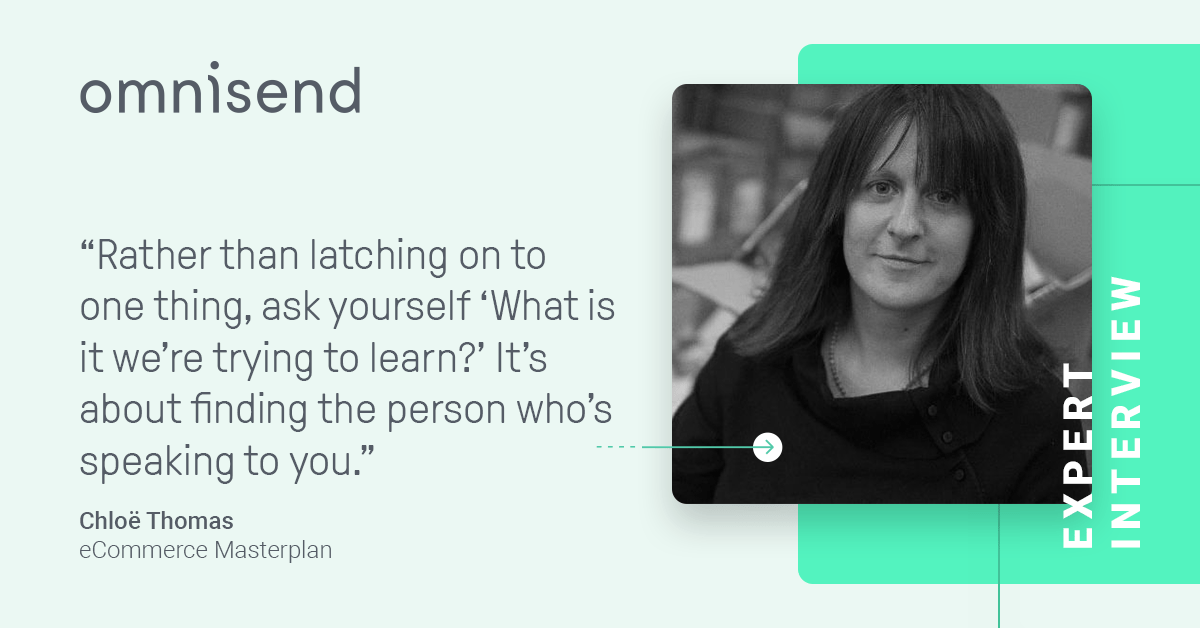
Ask yourself: “What is it we’re trying to improve at the moment.” Then go and find the right source for that information, and respect your own or your team’s learning style. You may have team members who love a YouTube video, others who like to listen to a podcast, others who want to read the book. That’s fine, whatever it takes for someone to learn, allow them to use their own learning style and to learn in their way.
It’s about thinking of “what is the problem, is it that we need to improve: our email marketing? Is it that we need to improve our organic social? Is it that we need some new things to test?”
Also, within that is finding the sources that are relevant to your business. We’ve just done a series on marketplaces on Keep Optimizing. Although it’s not truly a marketing method, one of the reasons that we’ve done marketplaces is because there’s a lot of noise out there in the marketplaces space of the whole get-rich-quick FBA schemes and white labeling and things that could just send you off down a rabbit hole.
That isn’t relevant for the brand—you have amazing products, great customers, and a solid route to market already. So I wanted to bring together people to tell the right way for that audience to go and do well on Amazon and eBay and so forth. It’s about finding the person who’s speaking to you.
If you find someone whose voice really resonates with you, maybe they specialize in your product category, or you just really like the way they talk or write, or the way they do YouTube—keep listening to that person. But I think to pick just one is probably an error. I think you should be cherry-picking the right events, the right podcast, the right books for you.
With as many experts producing content on a variety of ecommerce niches, it can be easy to just choose one and follow that source. However, as Chloë mentioned, it’s more important to figure out what question you need answered at any given time, then search for the best source for that answer.
Chloë herself produces amazing content across her podcasts, books, and regular ecommerce summits. Follow eCommerce Masterplan, and follow Chloë on Twitter and LinkedIn.
quick links
related features
No fluff, no spam, no corporate filler. Just a friendly letter, twice a month.
